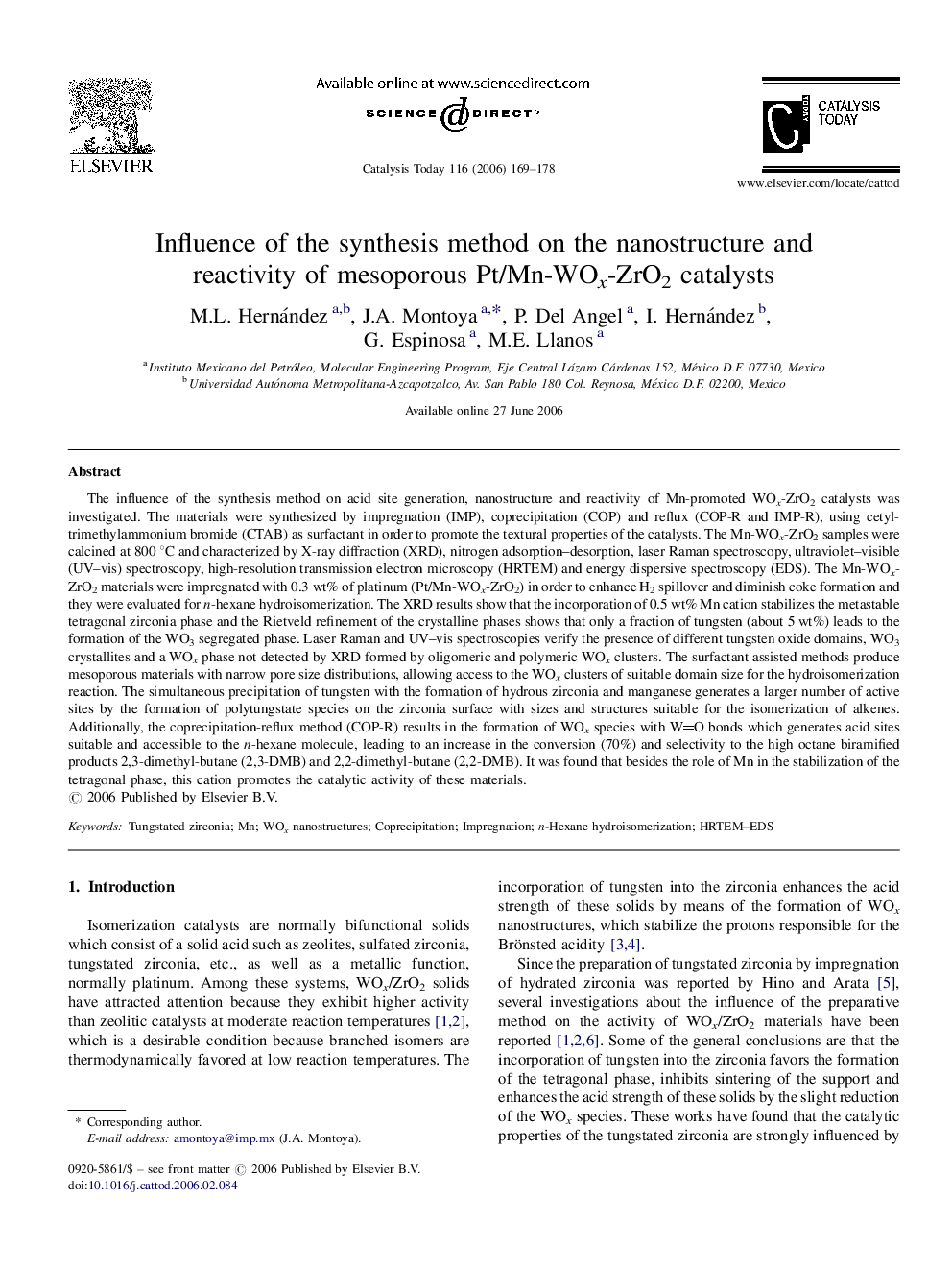| کد مقاله | کد نشریه | سال انتشار | مقاله انگلیسی | نسخه تمام متن |
|---|---|---|---|---|
| 58224 | 47145 | 2006 | 10 صفحه PDF | دانلود رایگان |

The influence of the synthesis method on acid site generation, nanostructure and reactivity of Mn-promoted WOx-ZrO2 catalysts was investigated. The materials were synthesized by impregnation (IMP), coprecipitation (COP) and reflux (COP-R and IMP-R), using cetyl-trimethylammonium bromide (CTAB) as surfactant in order to promote the textural properties of the catalysts. The Mn-WOx-ZrO2 samples were calcined at 800 °C and characterized by X-ray diffraction (XRD), nitrogen adsorption–desorption, laser Raman spectroscopy, ultraviolet–visible (UV–vis) spectroscopy, high-resolution transmission electron microscopy (HRTEM) and energy dispersive spectroscopy (EDS). The Mn-WOx-ZrO2 materials were impregnated with 0.3 wt% of platinum (Pt/Mn-WOx-ZrO2) in order to enhance H2 spillover and diminish coke formation and they were evaluated for n-hexane hydroisomerization. The XRD results show that the incorporation of 0.5 wt% Mn cation stabilizes the metastable tetragonal zirconia phase and the Rietveld refinement of the crystalline phases shows that only a fraction of tungsten (about 5 wt%) leads to the formation of the WO3 segregated phase. Laser Raman and UV–vis spectroscopies verify the presence of different tungsten oxide domains, WO3 crystallites and a WOx phase not detected by XRD formed by oligomeric and polymeric WOx clusters. The surfactant assisted methods produce mesoporous materials with narrow pore size distributions, allowing access to the WOx clusters of suitable domain size for the hydroisomerization reaction. The simultaneous precipitation of tungsten with the formation of hydrous zirconia and manganese generates a larger number of active sites by the formation of polytungstate species on the zirconia surface with sizes and structures suitable for the isomerization of alkenes. Additionally, the coprecipitation-reflux method (COP-R) results in the formation of WOx species with WO bonds which generates acid sites suitable and accessible to the n-hexane molecule, leading to an increase in the conversion (70%) and selectivity to the high octane biramified products 2,3-dimethyl-butane (2,3-DMB) and 2,2-dimethyl-butane (2,2-DMB). It was found that besides the role of Mn in the stabilization of the tetragonal phase, this cation promotes the catalytic activity of these materials.
Journal: Catalysis Today - Volume 116, Issue 2, 1 August 2006, Pages 169–178